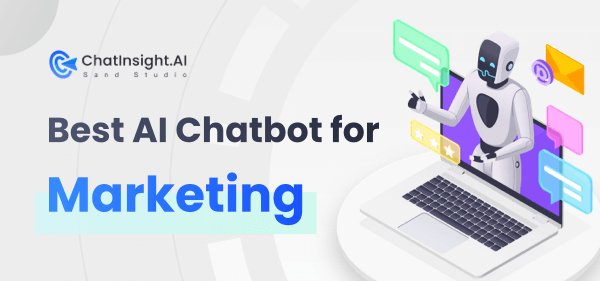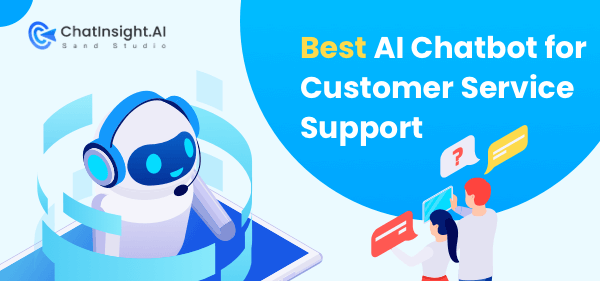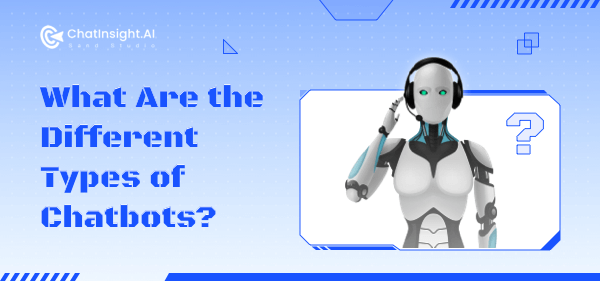AI Chatbot Vs. AI Virtual Assistants: What’s The Difference?
Is the virtual assistant vs chatbot discussion on your mind? The newer forms of technologies are dominating the different industries. The rise of chatbots has led to an increase in the use of virtual assistants. They deliver a personalized experience and improve strategy-building. Yet, chatbots are still a game-changer. Keep reading to know more.
What is a chatbot?
A chatbot is a software that has excellent conversational experience. It talks to the users based on text or audio. The input is then analyzed to generate relevant answers. Chatbot's tasks are solving technical issues and responding to customer queries. Furthermore, a chatbot will also offer user support. Chatbots are necessary to automate repetitive tasks, which saves time and resources. They establish a seamless workflow, letting the staff focus on important matters.
The initial chatbot models were rule-based. They operate based on pre-defined rules. In addition, the responses are scripted as well. Rule-based chatbots identify the relevant keywords and phrases to discover the appropriate answer. Unfortunately, rule-based chatbots sound very robotic. They cannot operate beyond their scope.
However, AI-powered chatbots are the opposite. They are employed with machine learning and Natural Language Processing models to deliver an excellent experience. An AI-based chatbot can be trained with datasets to deliver personalized services. They are appropriate for different situations because the chatbot offers dynamic content. AI-based chatbots store the context and ensure a natural flow to the conversation.
Rule-based and AI-based chatbots have overlapping roles. However, it is the technology that makes them unique. Chatbots have transformed different realms, such as marketing, e-commerce, and customer service. You can install them into the sales and marketing funnels to discover advantages unknown before.
What is a virtual assistant?
The second part of virtual assistant vs chatbot is understanding their scope. A virtual assistant is a digital application or software that makes excellent use of artificial intelligence technologies. It is a combination of Natural Language Processing, emotion reading, machine learning, and deep algorithms. A virtual assistant will schedule appointments, set reminders, and offer directions. Moreover, they will also make purchases and operate devices.
Natural Language Processing lets the virtual assistants decode user instructions. They are trained with large data sets to identify patterns. A virtual assistant will use the same technology to build relationships. Moreover, they will generate relevant feedback. You can train the virtual assistant to improve responses with an updated data set. As a result, they are able to handle complex tasks with a dynamic approach.
The AI-powered virtual tool will supervise routine tasks as well. They will answer simple questions and organize thoughts in software. They will also perform admin jobs such as sending emails, answering queries, or scheduling appointments.
Many businesses use virtual assistants to increase their productivity. It leads to better customer care. AI-powered assistants also assist human resources teams and customers very well. Virtual assistants are excellent for individuals who wish for their complaints to be resolved without human interaction.
Key Differences Between Chatbots and Virtual Assistants
Browse the chatbots vs virtual assistant differences below:
| Particulars | Chatbots | Virtual Assistant |
|---|---|---|
| Primary function | Unnatural responses to queries. Automated answers | Performs and assists with tasks according to different needs |
| Intelligence | Uses rule-based or AI algorithm | Uses advanced AI algorithm that adapts to new forms of learnin |
| Uses Cases | Transactional queries, FAQs, and Customer service | Scheduling, refunds, operating smart devices, and data access |
| Engagement | Short, dull, and related to the task | Long-term, organic, and personalized |
| Examples | Chat widgets and website support bots | Integrated into devices and operating systems |
| Interaction | Text-based with a unique domain | Voice or text-based with diverse domains |
| Difficulty | Simple to moderate | More complex to manage |
| Customization | Restricted | Very customizable |
| Integration | Integrates well into other websites and applications | Devices and operating systems |
Key Features
Chatbots:
- Modern-day chatbots do not require previous coding experience. They are easy to design with automated workflows.
- AI chatbotscan be installed across different channels. You can access and retrieve information with a simple click. It leads to a consistent experience.
- Thirdly, you can customize chatbots too. The client can decide on the tone and phrases to best represent the brand.
Virtual Assistant:
- A virtual assistant is an expert in speech-to-text and text-to-speech technologies. They interpret signals using a unique algorithm to perform complicated actions.
- Virtual assistants have the technology to evolve according to the latest requirements. They will analyze the communication between the staff and the customer for the brand’s benefits.
- Lastly, a virtual assistant will understand emotions. They can assess the undertones in voices and tonal changes. An AI virtual assistant analyzes facial expressions and body language as well.
Functions
Chatbots are primarily used for client-based solutions such as a company or a small business. However, virtual assistants are used to enhance customer experience. Chatbots allow businesses to provide better guidance and engagement to customers. Moreover, they also assist the sales and marketing staff.
In the chatbots vs virtual assistant argument, the latter is intended to make operations easier. In addition, the virtual assistant will carry out complex tasks as well. Virtual assistants will read out recipes. They can give you updates about the weather. Have a fun conversation with the virtual assistant if you are bored.
Use Cases
You will notice chatbots appear on websites and other support portals. Messaging chatbots are also common social media and mobile applications. They are found in in-app widgets with a conversational user interface.
Virtual assistants are found in modern devices such as homecare and browsing assistants. The technology uses chat-based interactions. In addition, they also operate with voice commands. Virtual assistants usually do not have an interface.
Technology
When making the virtual assistant vs chatbot argument, the latter is rule-based. However, they can also employ machine language or contextual algorithms as well. As a result, they have different levels of difficulty. Furthermore, you can also build a chatbot with a decision tree that has pre-set rules. Machine learning chatbots are more common because they offer more functions.
On the other hand, AI chatbots perform using machine learning combined with Natural Language Processing. They evolve with learning. Furthermore, they also retain information. Smart virtual assistants use natural language understanding to generate artificial emotions. They can understand commands better. At the same time, virtual assistants communicate organically as well.
Which One to Choose: Chatbot vs Virtual Assistant?
Chatbot Benefits:
24/7 availability
The most impressive quality of the chatbots is that they are available around the clock. You will notice they are active, whether it is a website, call center, or store. The chatbot is available with a few clicks to assist customers whenever they require it. In short, the high level of convenience is very helpful in today’s fast-paced world.
Chatbots allow businesses to be ever-present for their customers. They are available to answer queries related to product development, use, and updates. After learning about the brand and the product, the customer will shop from the online store. Thus, the sales funnel remains active day and night.
Cost-effective
AI chatbots are cost-effective because they are available day and night for customer support. The availability reduces the hiring of human service agents. It leads to huge cost savings as there are no staffing expenses. Resources are allocated to more important areas of the company. Chatbots are also cost-effective because they introduce efficiency and streamline operations.
A chatbot will answer multiple queries at the same time. In addition, they reduce waiting time and improve customer experience. If you wish to reduce costs in your company while improving customer experience, then chatbots are much-advised. They will ensure a better output.
Consistent Customer experience
A prominent aspect of chatbots vs virtual assistants is consistency. Chatbots are famous for collecting feedback from users and buyers. The data collected will highlight different areas of improvement. Moreover, the chatbot also regulates responses. They use powerful NLP engines to analyze emotions and sentiments.
Chatbot technology is looking brighter than ever. As the technology advances, their responses are likelier to represent a human. Chatbots are versatile and take the initiative to learn about the user. It will offer solutions to customer problems before they surface. Thus, eliminating the rift between the vendor and the customer.
Scalability
Chatbots positively influence the business in many ways. Since they are available day and night, chatbots improve customer support operations. It results in a stronger relationship with the buyer. The actions translate to repetitive business and referrals. In addition, the chatbots also allow easy access to data. Thus, the sales funnel improves.
Chatbots will also offer personalized suggestions to customers based on their needs and requirements. Furthermore, they will also cross-sell and upsell products that benefit the brand. It is a combined approach that improves conversation rates. You can also use chatbots to attract more customers from unknown markets because the bots are globally accessible, regardless of the time zones.
Improved customer engagement
Chatbots offer top-quality customer engagement. They interact with customers in a more personal tone. The chatbot makes excellent use of Natural Language Processing algorithms and machine learning to decipher customer queries. As a result, the answers and suggestions are relevant. The brand can customize the responses in real time as well.
The personalized level of engagement allows the brand to connect with the customers. It builds trust and credibility in the market. Buyers shop from the brand again. The enjoyable shopping experience each time leads to high levels of customer satisfaction. The brand has started earning a positive reputation in the market as well.
Virtual Assistant Benefits:
Comprehensive Assistance
When discussing the chatbot vs virtual assistant benefits, the latter is beneficial because of its expansive approach. The technology uses machine learning and NLP algorithms to identify relevant attributes in a conversation. Furthermore, the virtual assistant can also decode emails, schedule calendar appointments, and maintain data sources.
Other features of a virtual assistant include screen readers and voice recognition. They have multilingual support to attract international customers. Thus, the brand experiences more engagement. It will identify the different needs of the customers. It will recognize the right to voice to ensure accessibility. Therefore, the data and credentials are not leaked.
Advanced Personalization
Virtual assistants are constantly learning new attributes and qualities. Moreover, they are storing data from different interactions as well. A virtual assistant is excellent at collecting insight from user’s interactions and choices. As a result, the brand can customize the feature to enhance the user experience.
The tasks are completed without frustration. Moreover, they take minimum time to complete. When more things are done in a limited time, it speaks to the efficiency of the virtual assistant. The client can pick the tone, words, and phrases that represent their brand. On the other end, customers also appreciate the politeness and the considerate way of communication.
Complex task handling
A virtual assistant will handle complicated tasks expertly. Its algorithm will study the market trends and customer behavior. A virtual assistant is constantly collecting information and providing real-time updates. The client can make prompt decisions and expect a high return on investment. In short, a virtual assistant makes matters easier.
The client can delegate complicated tasks to the virtual assistant. It increases productivity, and the customers are pleased. As a business owner, reliability is very helpful so you can focus on more important business matters such as expansion, scalability, and market share. A virtual assistant will reserve travel details, manage client accounts, and so much more.
Which is the best: chatbots or virtual assistants?
When picking between the virtual assistant and a chatbot, the client must decide on the functionality. Another criterion is user experience for task handling. Furthermore, you can also analyze the competitors to see which technology they are using. Lastly, think about the scope of virtual assistants and chatbots to discover their best use.
Final Words
Chatbot vs virtual assistants has similar attributes. However, the primary differences are the design and the purposes. Virtual assistants are appropriate for a wide range of responsibilities. However, chatbots are excellent for specific tasks. Virtual assistants and chatbots are intended for assistants, so use them today to improve workplace operations.







Leave a Reply.